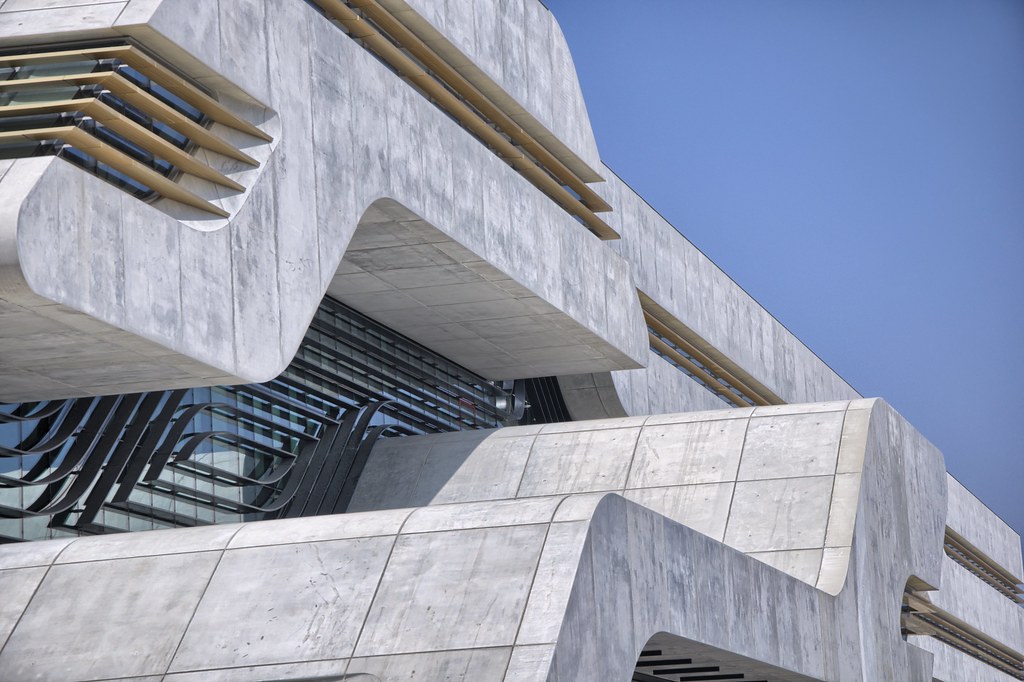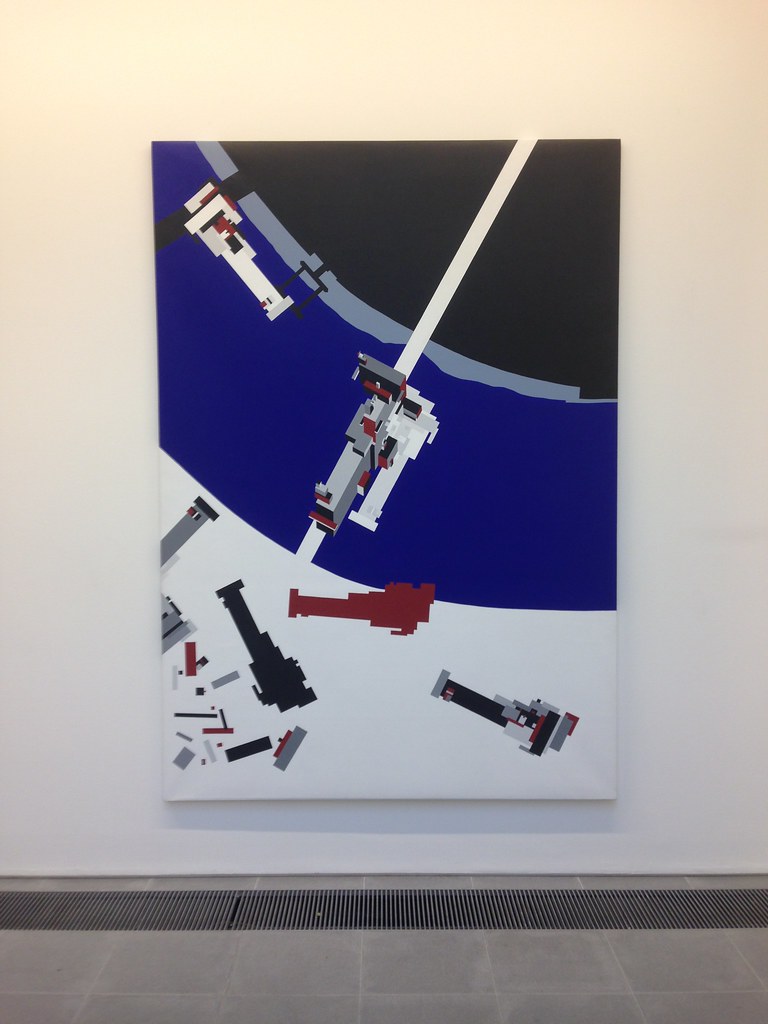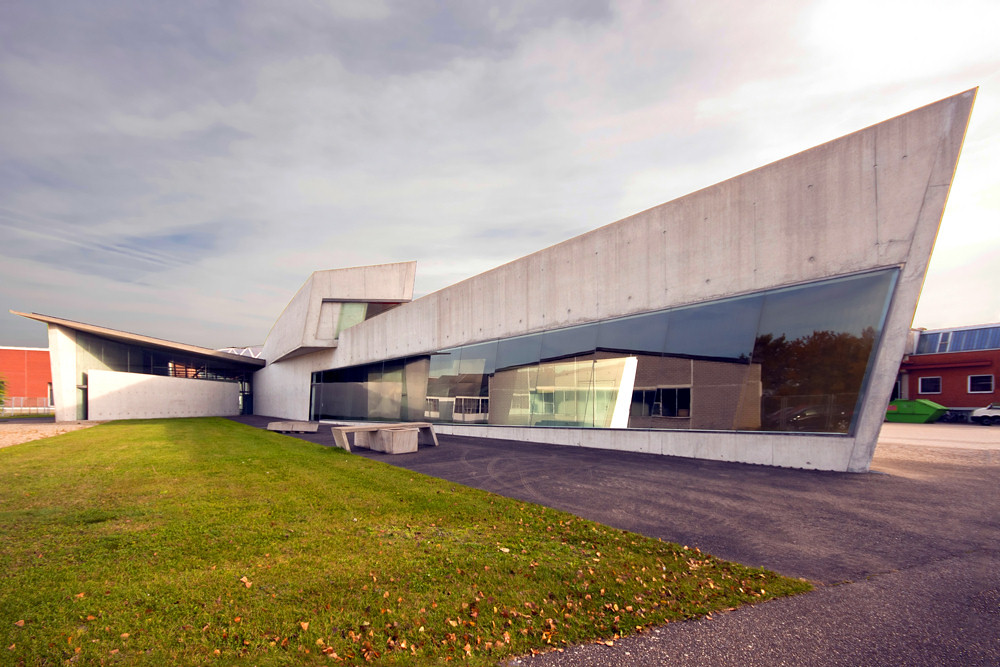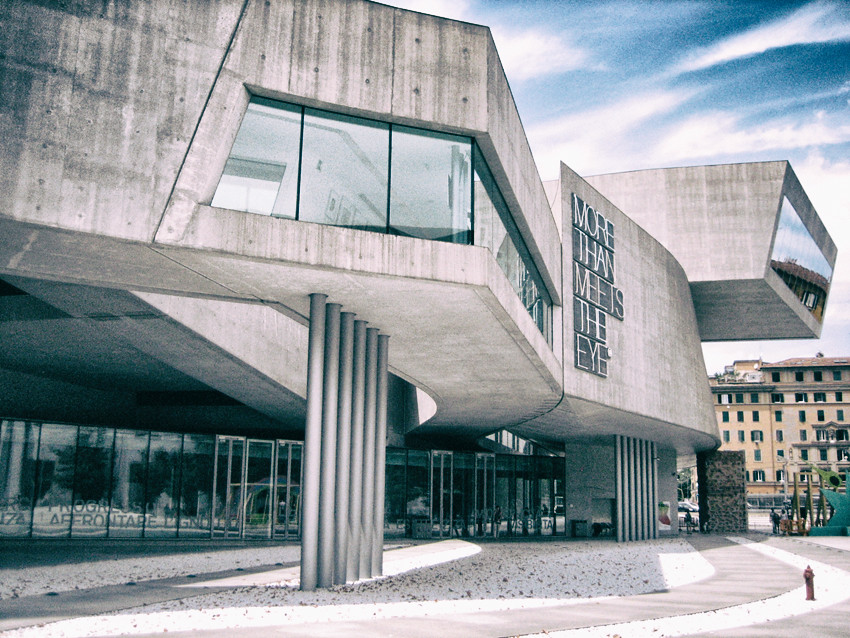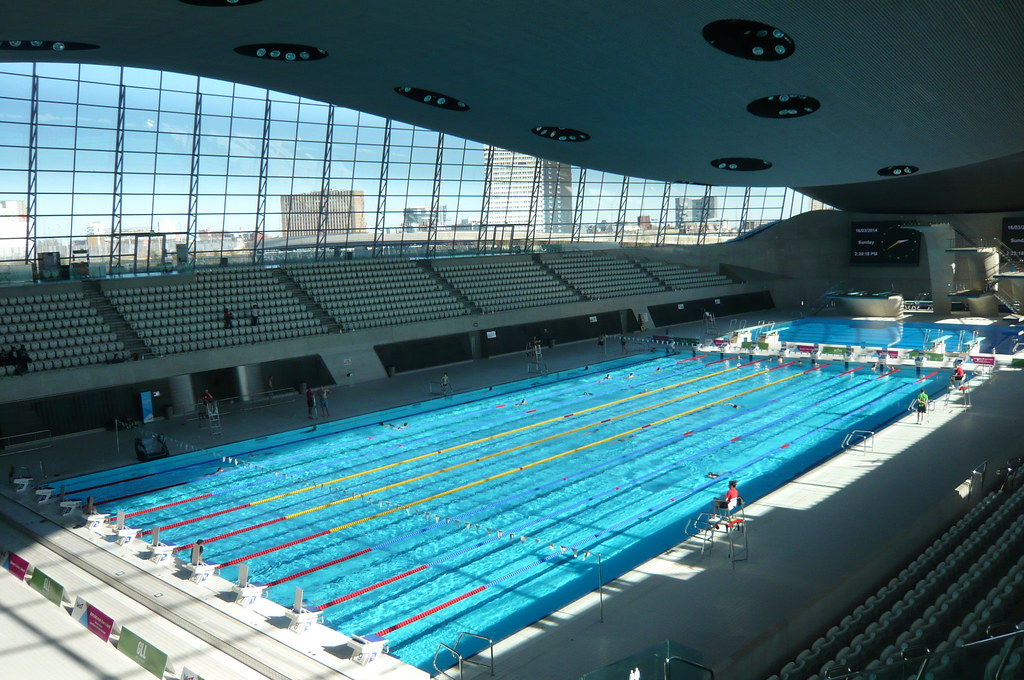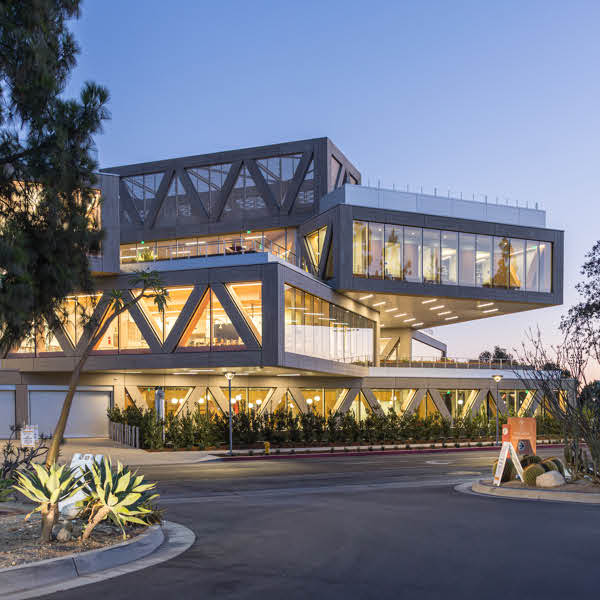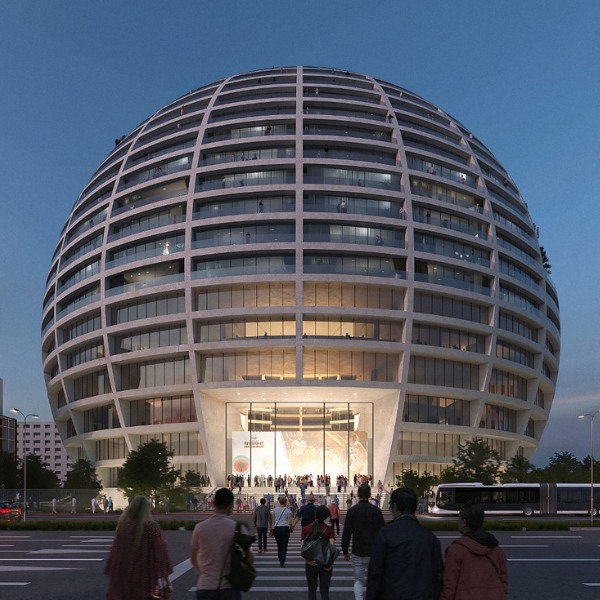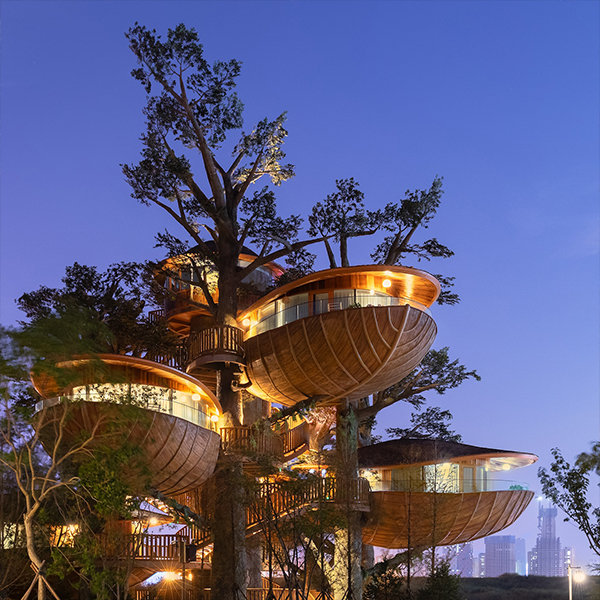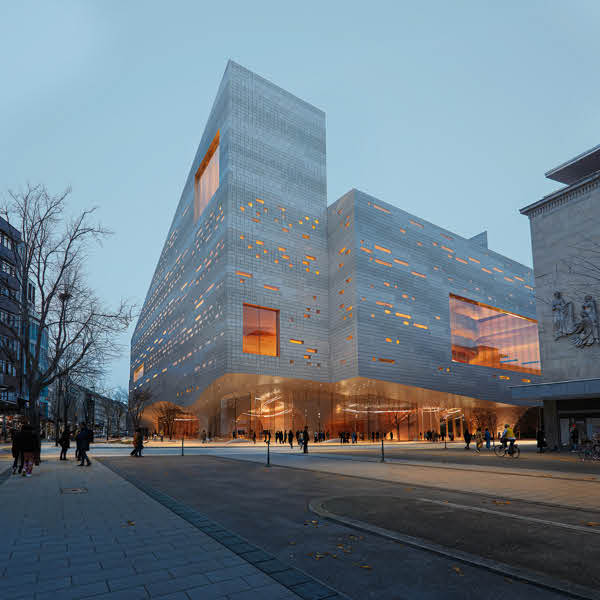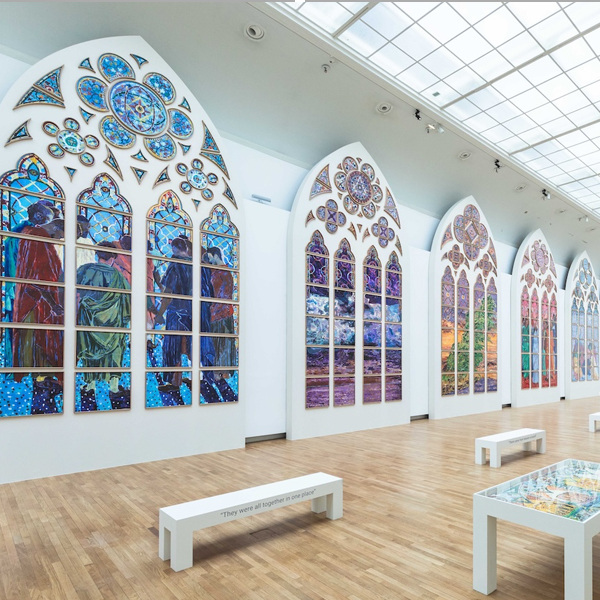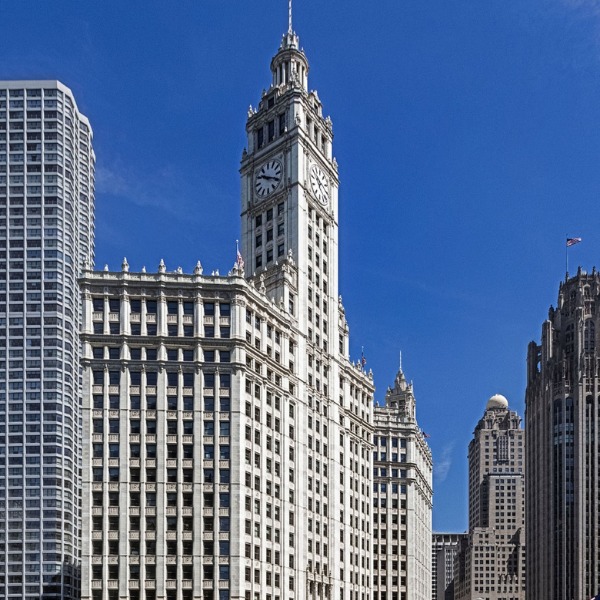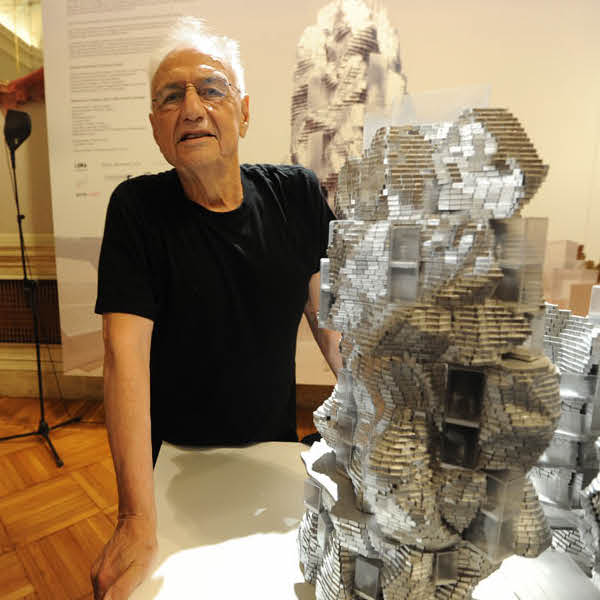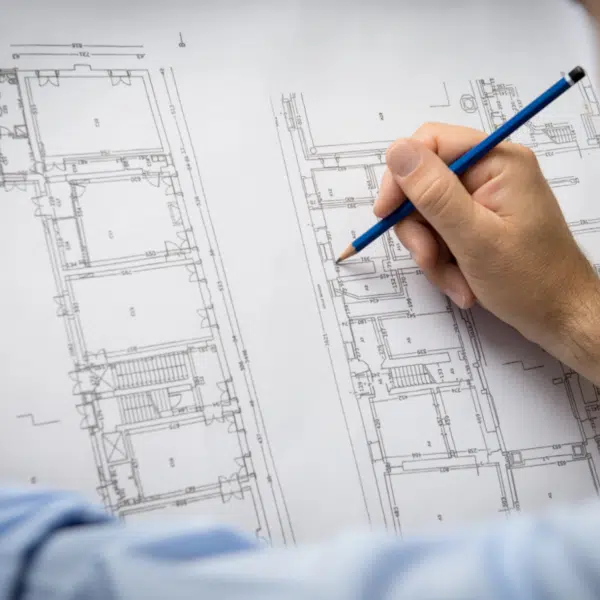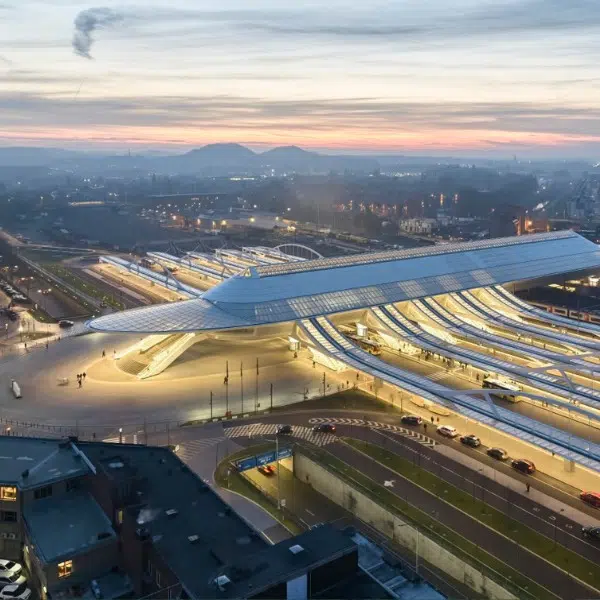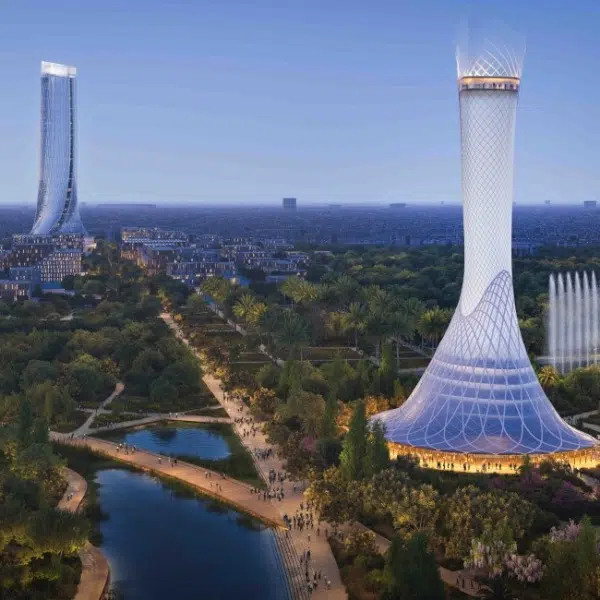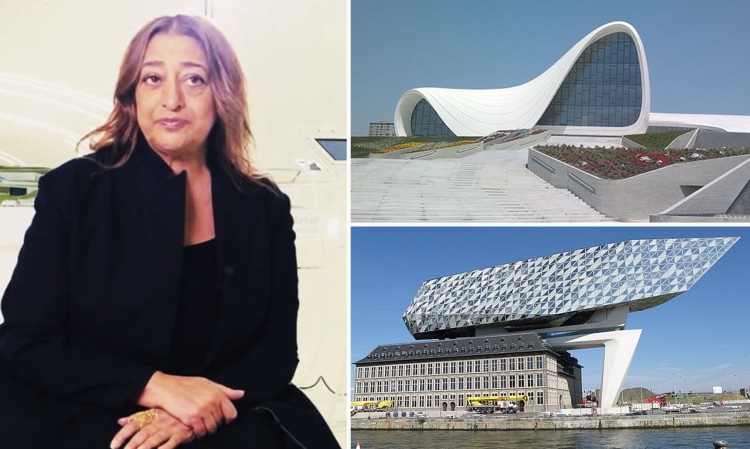
Left: Sergey Khodakovskiy (www.hitartstudio.com) (https://www.youtube.com/watch?v=F5L-8S-PR7c) [CC BY 3.0], via Wikimedia Commons, Top Right: Interfase, Public Domain via Wikimedia Commons. Bottom Right: Torsade de Pointes (Own work) [CC BY-SA 4.0], via Wikimedia Commons
This post may contain affiliate links. If you make a purchase, My Modern Met may earn an affiliate commission. Please read our disclosure for more info.
Already recognized as a talent while studying at the Architectural Association School of Architecture—former professor Rem Koolhaas described her as “a planet in her own orbit”—her more than 30-year career helped shape the way society thinks about contemporary architecture. As a rare female in a male-dominated industry, and the first woman to win the prestigious Pritzker Architecture Prize, Hadid served as a beacon for creatives from different backgrounds, proving that you didn't need to be a white male to make a statement in architecture.
Her untimely passing in 2016 left unfinished projects, many of which are now being brought to completion by Zaha Hadid Architects, the firm she began in 1980, just a few years after finishing her studies. Carrying on her work, we are able to see the physical realization of Hadid's creative mind.
Not just limited to architecture, her work in interior design, fashion, industrial design (including yachts), and fine art reminds us of what a well-rounded artist she truly was. The scope and breadth of this creativity has left a lasting legacy that continues to influence creatives in all fields, even today.
Characteristics of Zaha Hadid Architecture
Known as the “queen of curves,” Zaha Hadid's architecture isn't easily grouped with one particular architectural style. It was a purposeful choice, as Hadid preferred not to limit her practice to a specific movement. She is well-known for her use of geometric shapes to create dynamic, fluid structures. Certainly, much of her influence stems from her love of abstract painting and drawing. It's well-documented that she was particularly fond of avant-garde Russian painters such as Kazimir Malevich and even re-interpreted Vladimir Tatlin’s Monument to the Third International for an exhibition at the Guggenheim.
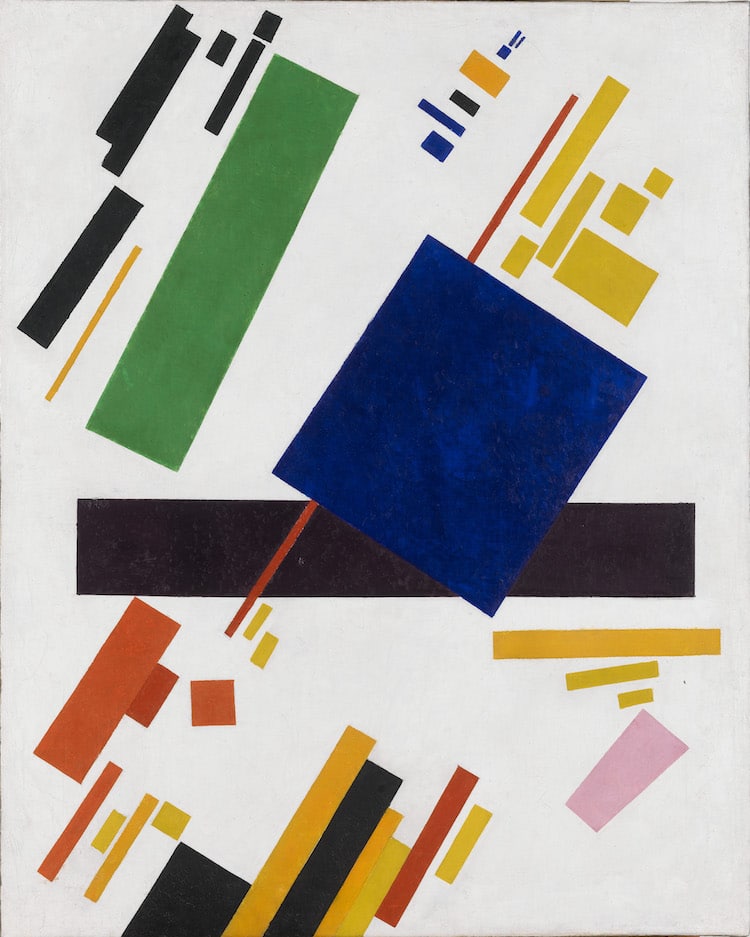
‘Supremacist Composition' (1916) by Kazimir Malevich [Public domain], via Wikimedia Commons
Working particularly with concrete and glass, Hadid took these industrial materials and bent them into forms that subtly recall natural shapes. By deconstructing these forms, she was able to present cutting-edge work that also evokes human emotion.
Iconic Zaha Hadid Buildings
From 1994, when she completed the Vitra Fire Station, Zaha Hadid's architectural output included museums, sports and cultural centers, commercial and residential buildings, as well as bridges and train stations. A look at some of her most iconic buildings.
Vitra Fire Station, Weil am Rhein, Germany (1993)
Built in a small German town on the borders of Switzerland and France, the Vitra Fire Station was Hadid's first opportunity to bring her abstract drawings and paintings to life in a physical form. The sharp, angular concrete planes of the building are a glimpse into the future of Zaha Hadid's architecture, with the project garnering her international acclaim.
MAXXI, Rome, Italy (1998–2010)
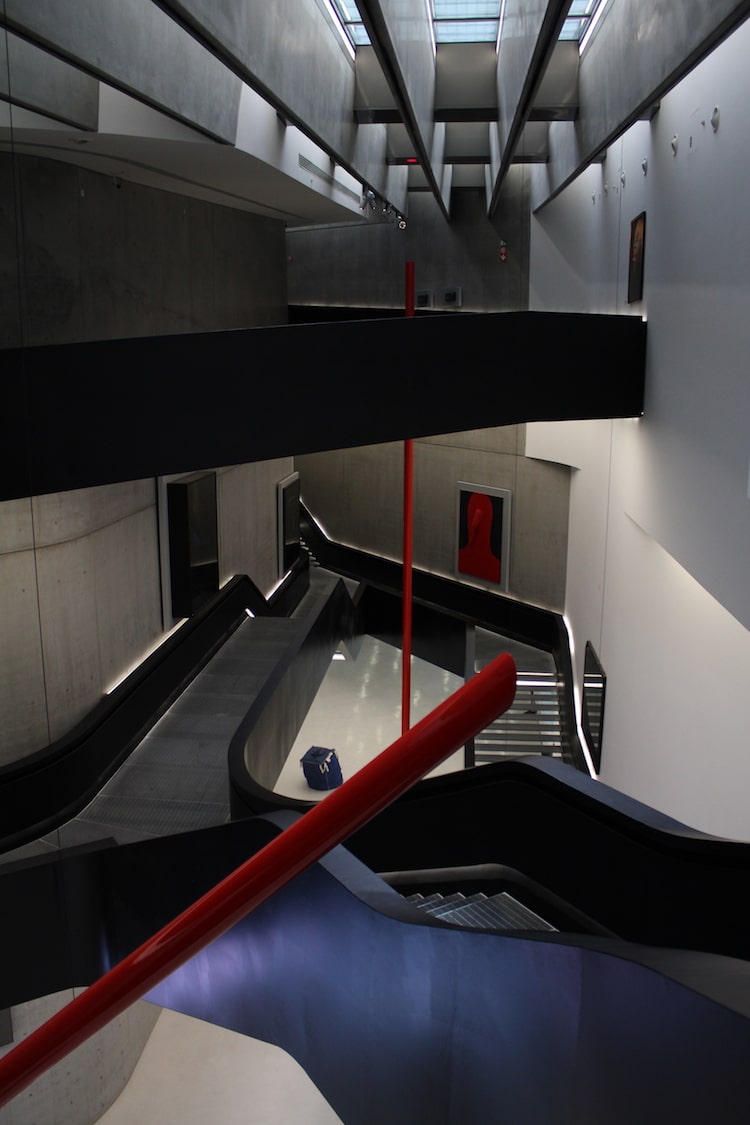
Photo: Commonurbock23 (Own work) [CC BY-SA 3.0], via Wikimedia Commons
Phaeno Science Center, Wolfsburg, Germany (2005)
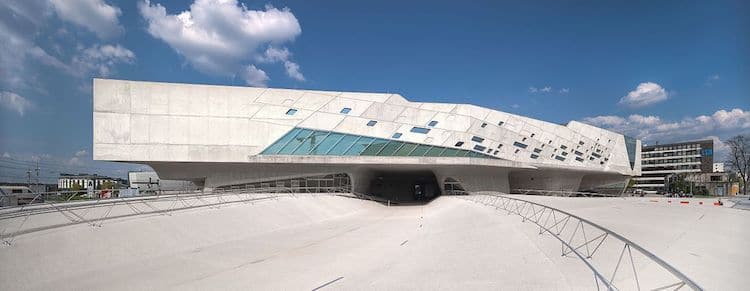
Photo: Richard Bartz (Own work) [CC BY-SA 3.0], via Wikimedia Commons
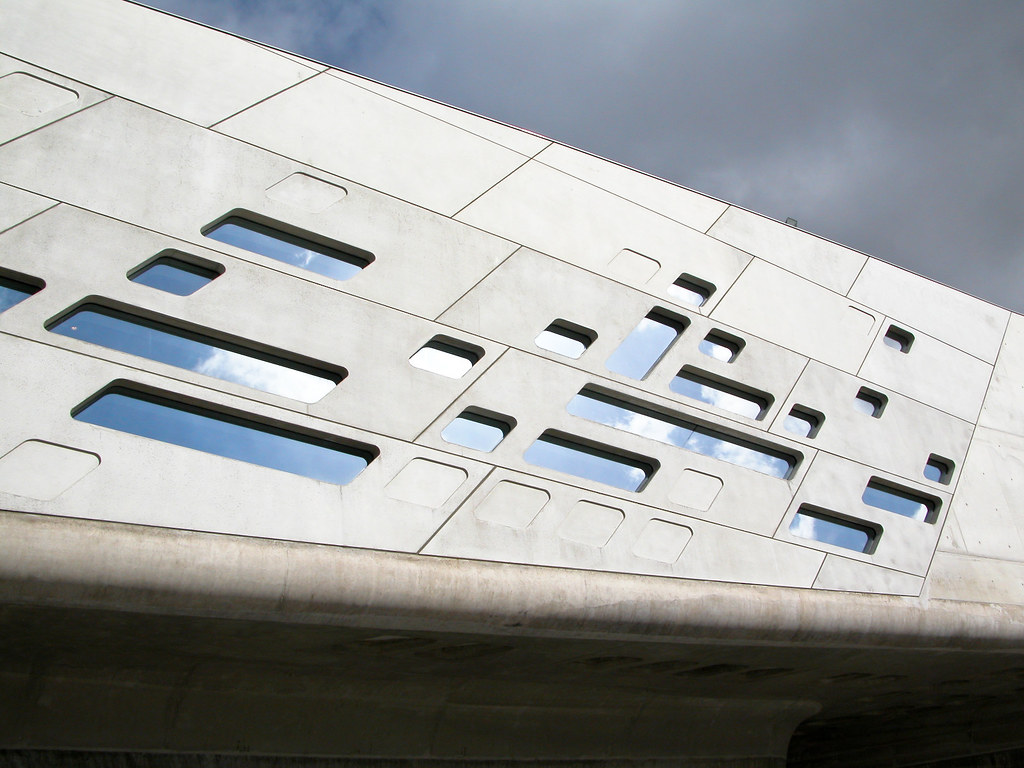
As the biggest investment the city had ever made, Wolfsburg's new science center had a lot of riding on it. Hadid delivered with a stunning building that marries contemporary materials and forms into a timelessly classic building. The glass cutouts and ceiling latticework are recurring themes throughout Zaha Hadid's buildings, with the concrete pillars creating “undulating artificial hills and valleys.”
Olympics Aquatics Centre, London, England (2005–2011)
For the 2012 Summer Olympics, Hadid was charged with creating one of the major centers for the event. The resulting Aquatics Centre is a masterpiece with an undulating roof that rises up like a wave—a nod to Hadid's inspiration. She looked to the forms of water in motion, making the natural shape with exposed concrete finishes. Though subsequently modified to transform the center into a space for public use, it remains one of the highlights of Olympic Park.
Sheikh Zayed Bridge, Abu Dhabi, United Arab Emirates (2007-10)
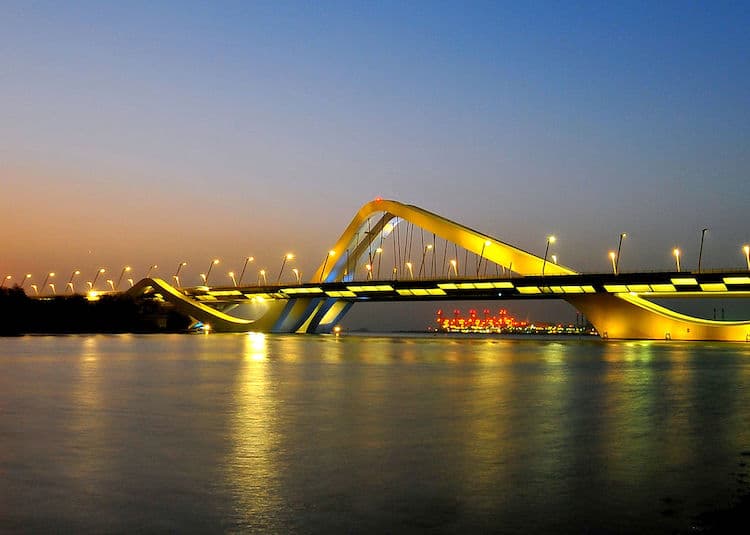
Photo: Mohannad Khatib (Flickr: Sheikh Zayed Bridge – Abu Dhabi, UAE) [CC BY 2.0], via Wikimedia Commons
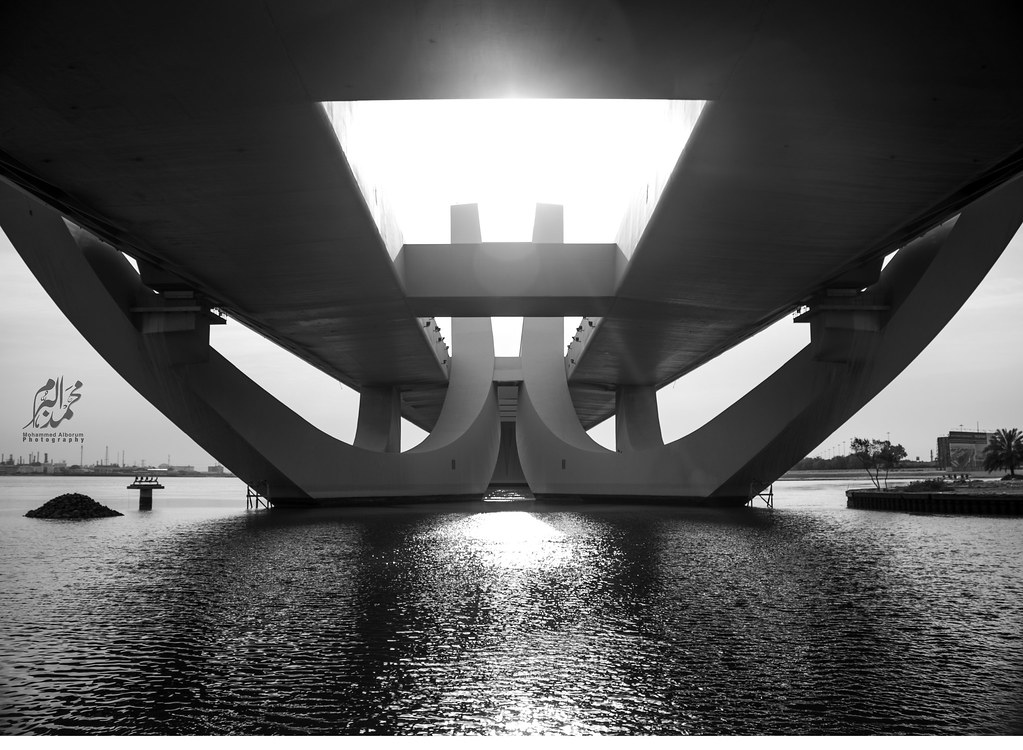
The two-way four-lane highway bridge is a stunning look at how Hadid's curving forms translate to functional architecture. The undulating bridge, which connects Abu Dhabi island to the southern Gulf shore, was inspired by the forms of sand dunes, once again showing how Hadid's architecture takes inspiration from nature. Stretching a half-mile (842 meters), it's said to be one of the most complex bridges ever constructed.
